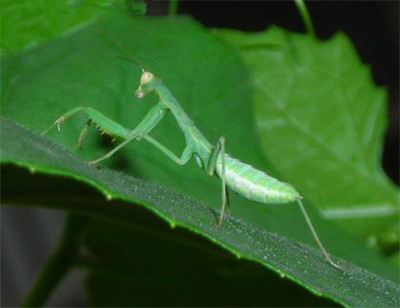A number of animals, including honeybees and butterflies, use sunlight's polarization in their navigations, but the dung beetle is the first animal ever discovered to use moonlight's polarization to guide its travels.
很多的動物都根據陽光的自然偏振作用來為自己尋找方向,這些動物甚至包括蜂鳥和蝴蝶。然而,大千世界無奇不有,科學家們發現蜣螂很不一樣—它們依靠月光的偏振來完成它們的“旅行”。

Polarization happens when some of the light from the sun interacts with particles in the atmosphere, causing the light to vibrate along a single plane.
人們很早就發現了一點:動物的眼睛很是敏感,它們能夠感受到光的偏振。這就不足為奇了,蜣螂最值得讓我們去注意的是—月光的強度僅僅是陽光強度的百萬分之一,必須要多很多對眼睛才能夠感受得到。











